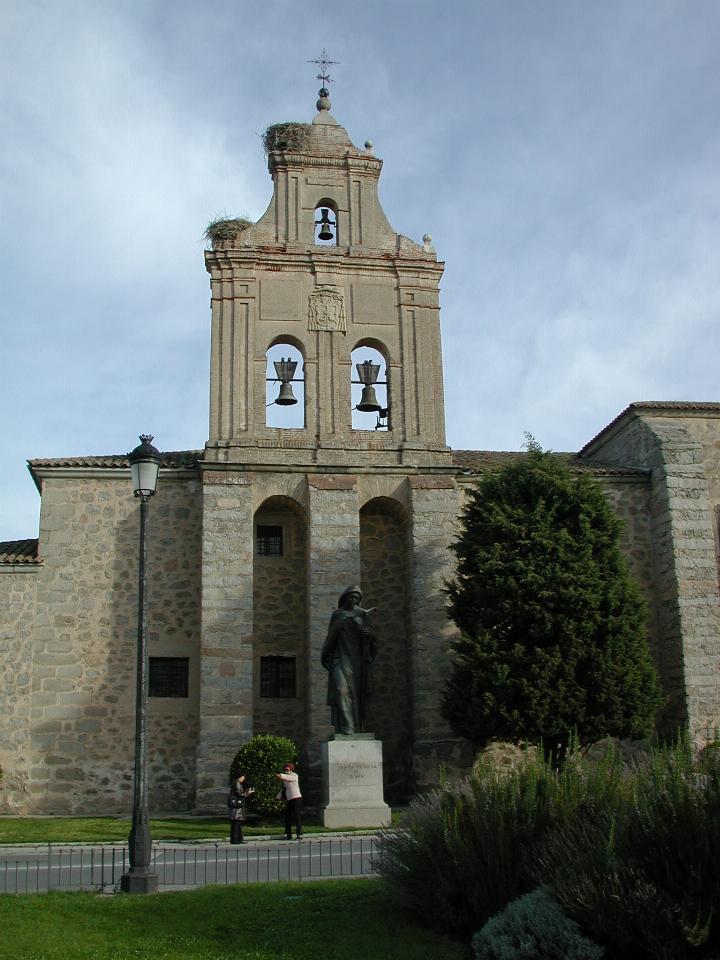
Avila was passed back and forth between Muslims and Christians until Alfonso VI claimed it definitively in 1090. He promptly transferred his best knights from the northern kingdoms to the city and they began constructing fortifications. The walls, which average 10m in height and 3m in width, have 88 round towers and nine fortified entrances. Over a mile (1.6km) of walls stretch around the old city.
Since the late 16th century, the city has been a magnet for pilgrims as the birthplace of St. Teresa, who was born in 1515. While her parents had Jewish roots, they decided to send her into a convent, perhaps to escape the Inquisition. Teresa chose the Carmelites, although with misgivings, writing "I did not think the day of my death would be more upsetting."
However, Teresa took to the life with gusto, and started having face to face conversations with Jesus, starting with an encounter with the baby Jesus on the convent stairs. She began the Discalced (barefoot) Carmelites in protest at the opulent lifestyle of her convent. She also had animated conversations with her confessor, St. John of the Cross. Her memoirs describe one scene where Teresa and "my brother John" became so ecstatic during a theological exchange that they levitated, each on their own side of the wooden screen separating them.
Saint Teresa was canonised in 1622, 40 years after her death, and was made the first female Doctor of the Church during a visit by Pope John Paul II to Avila in 1982.
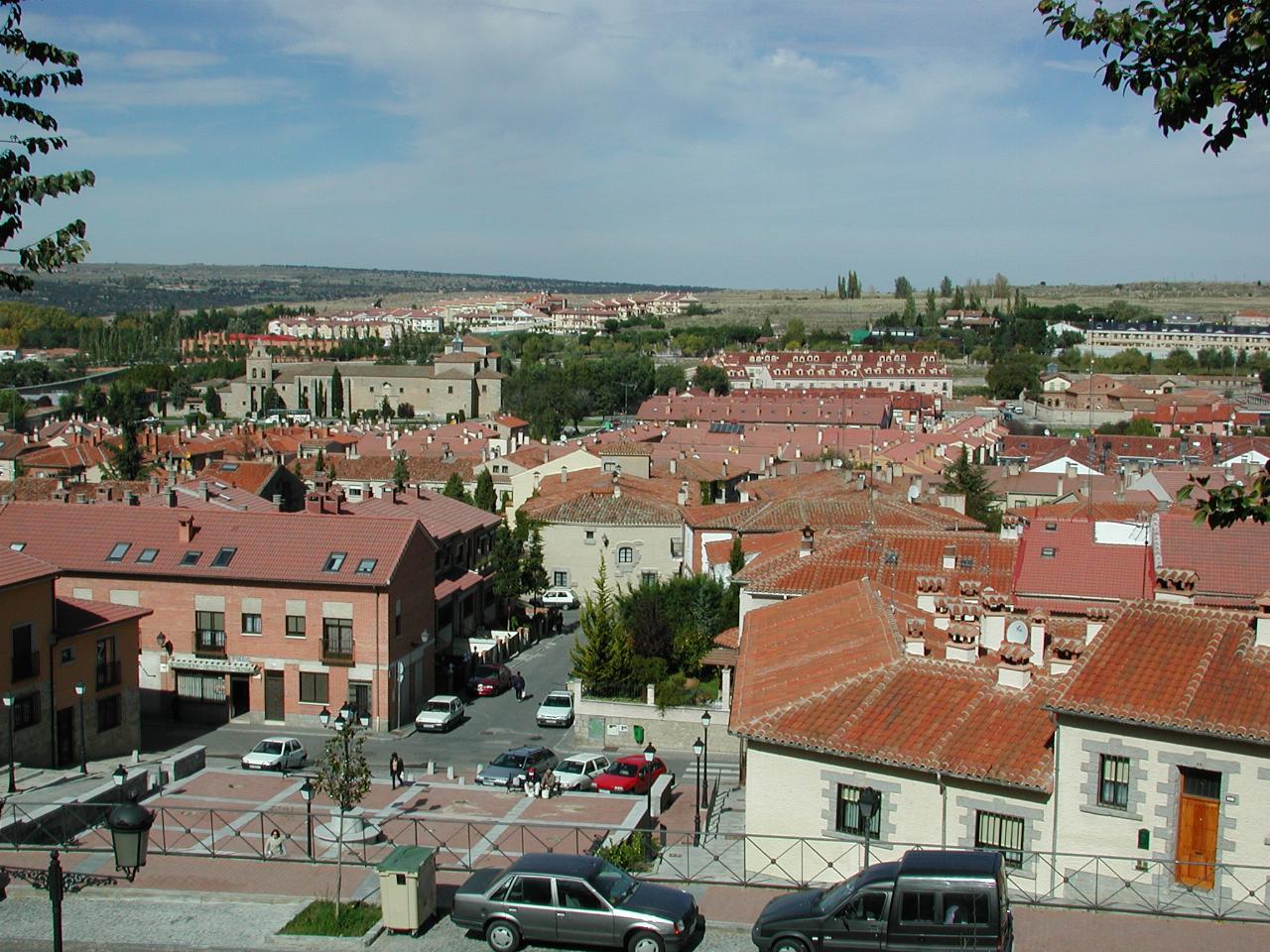
North of the walled city is the Convent of the Incarnation, Teresa's home for 30 years. It's outlined in white.

The bell tower of the convent, including a couple of "free loaders" - the large bird nests!
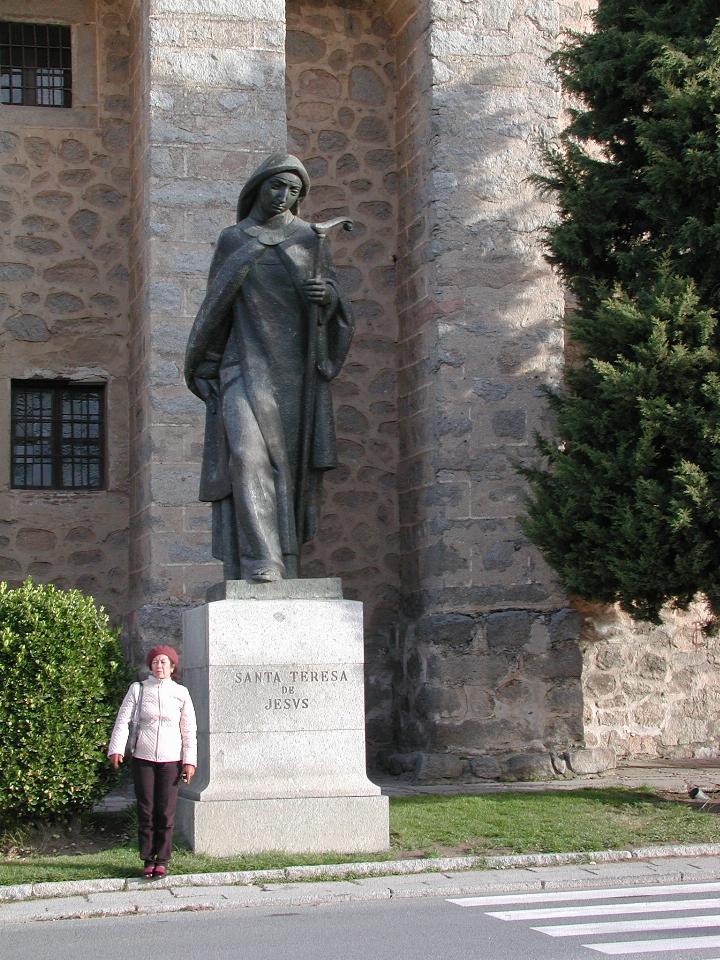
A statue of St. Teresa in front of the convent.
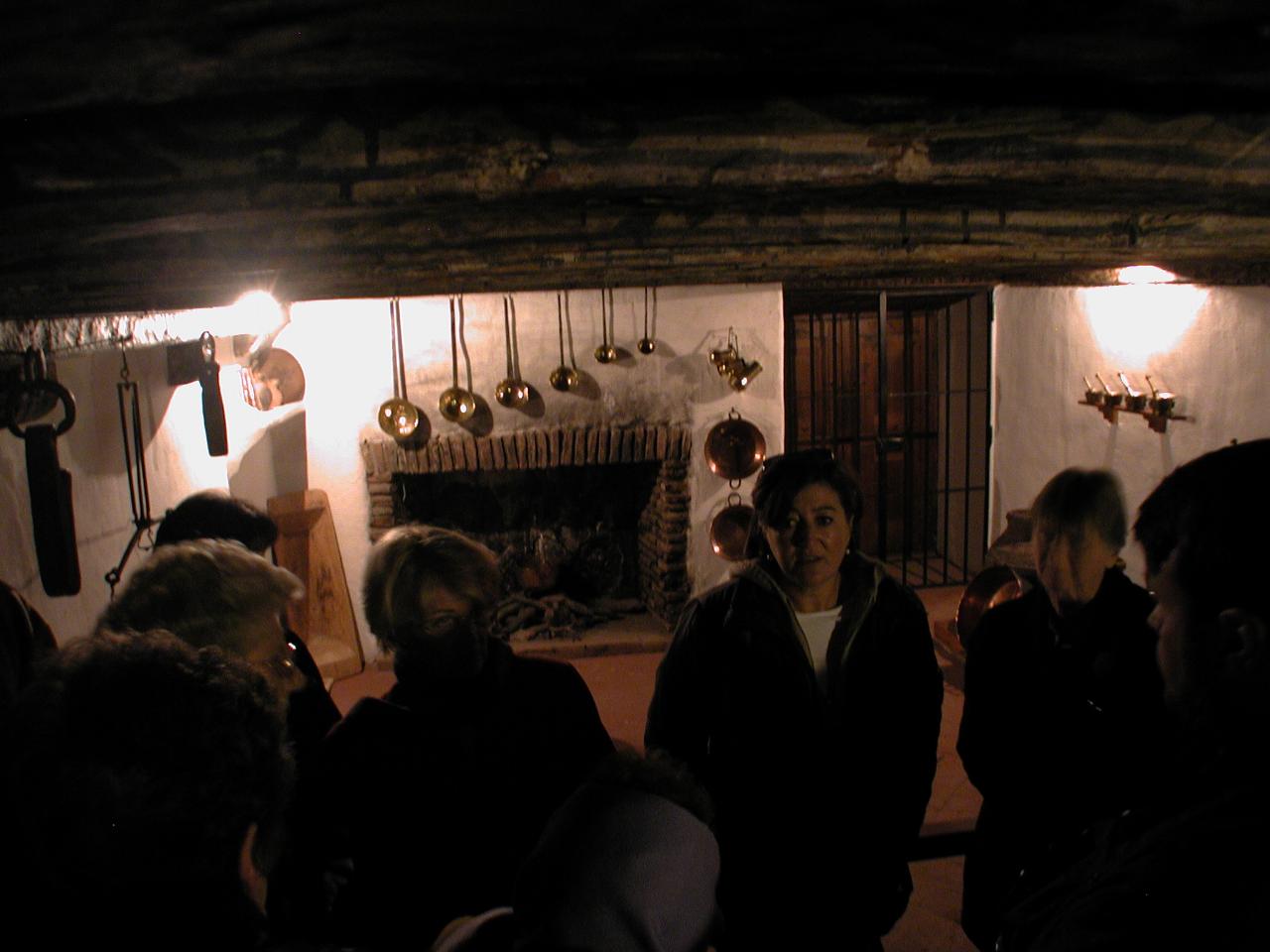
A room typical of the style during Teresa's time, a time when nuns from rich families might have many of the comforts of home with them.
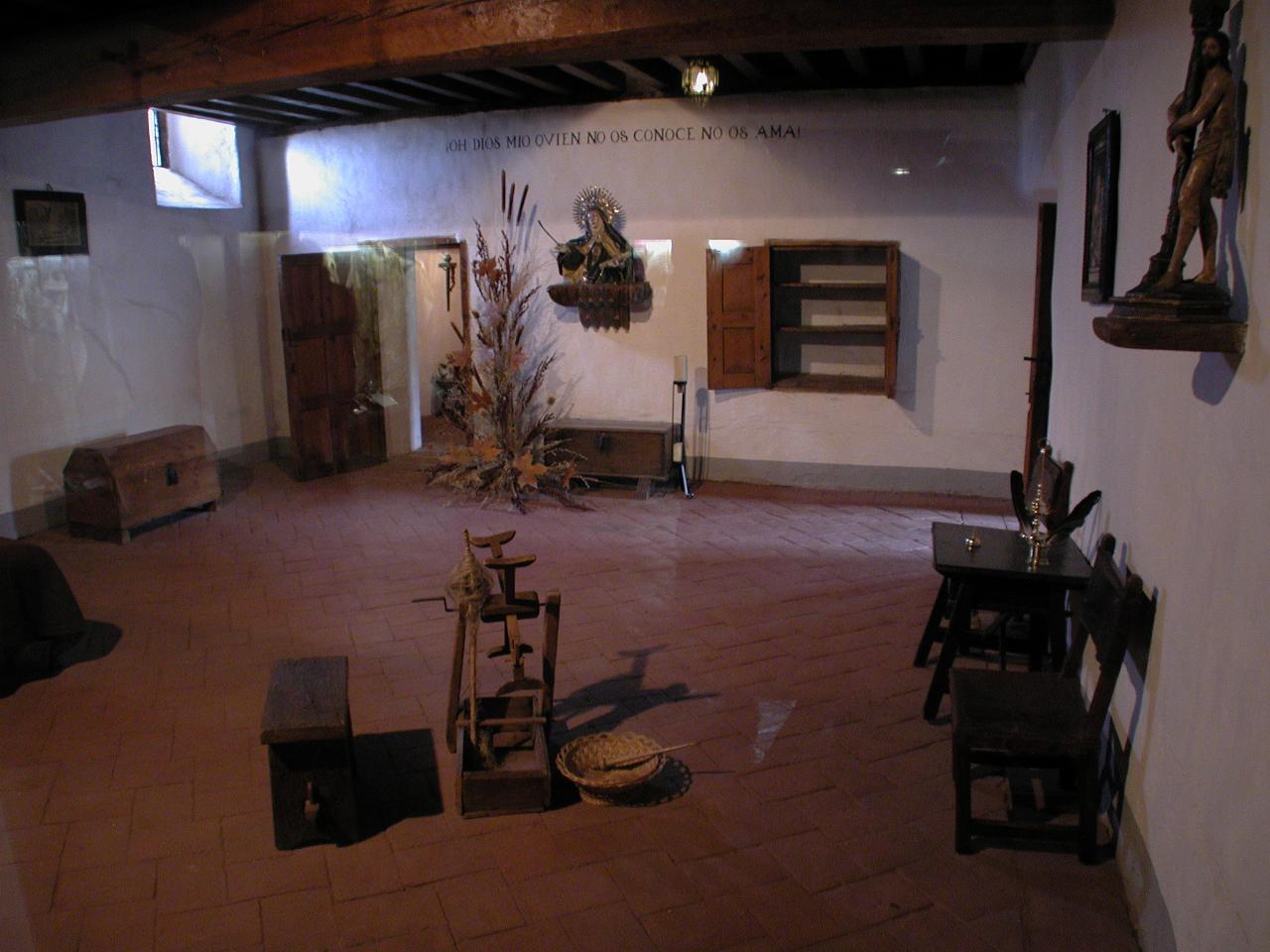
The prioress' room in the convent, where Teresa was prioress for many years.
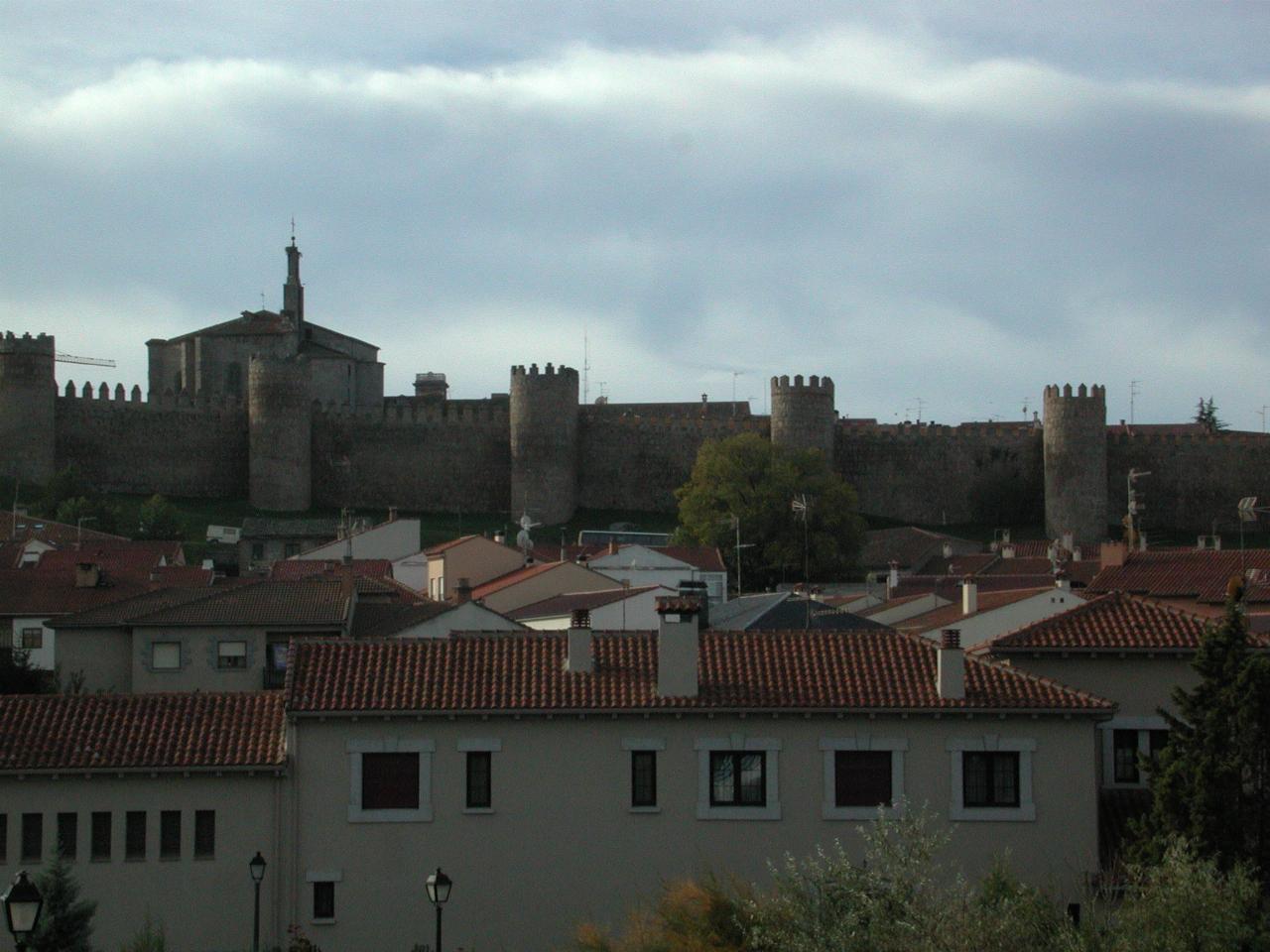
Looking at the city walls surrounding old Avila from the front of the Convent of the Incarnation.